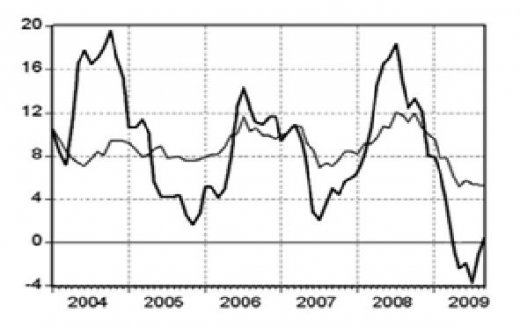Rents cannot be indexed to PPI
I enumerated a lot of topics to handle, but unfortunately I cannot begin dealing with them today. The reason is the will 'to be useful' for the country. The Parliament is negotiating the 'Code of Obligations'. This is a highly important draft. Yesterday, Radikal daily gave information on some articles of the law draft. The section also gave separately a column on the articles regulating renter- house owner relations. As one of the articles stipulate, rents can be increased at most by the rate of increase in producer price index (PPI). Oh no! New price indices are being published since 2003. Before that, consumer price index (CPI) and wholesale price index were calculated. Now, CPI and PPI are calculated.
I said "Oh, no" because of this: as from the method of calculation, PPI is a highly volatile index. This volatility has the potential to cause a number of disagreements between renters and house owners. Let me exemplify this using 2009 data.
Assume that your rental contract has expired at the beginning of June. If you are the house owner, you are 'ruined'. If you are the renter, you are lucky because annual PPI inflation for that period is minus 2.4 percent. That is to say, your rent will not be raised and in fact it must be reduced as this law draft stipulates. But if your rental contract was to terminate three months before, you could have faced almost 6.9 percent raise in your rent!
Let me provide a graph to put the difference between the two inflation rates more clearly. Graph 1 shows annual inflation rates calculated with CPI and PPI for 2004-2009 period. Bold and more volatile line represents PPI.

Graph 1: Annual inflation rates calculated with PPI and CPI (%, 2004 January 2009 September)
There is another reason apart from volatility to use CPI: it is the CPI that concerns the ordinary men on the streets. It measures directly the price movements that affect our purchasing power. However, PPI basket contains a number of commodities that does not concern us. Therefore, the movements in such commodities' prices do not interest us.
Law makers adding articles on penalty rates or inflation-based raises to law drafts had better consult with relevant institutions first. This way, we will not have to spend space for such 'simple' facts. Anyway, I hope that this article serves the purpose and the PPI article in the law draft is replaced by CPI.
And a note: My article on Thursday ended as follows: "And a wish: after all, it is quite easy to calculate data net of the number of working days and seasonal movements. It will be quite easier if TURKSTAT published net-of data simultaneously with raw data." I received a mail from TURKSTAT Press and Public Relations Consultant İrfan Çöllüoğlu. He calls my attention to TURKSTAT press release dated 30 July 2009 announcing that 'raw data' and 'net data' will be released together as of the beginning of 2010. OK, but given that couple of months ahead are quite sensitive considering economic analysis, this can be backdated at least for production, capacity utilization and employment data, cannot it?
This commentary was published in Radikal daily on 18.10.2009




